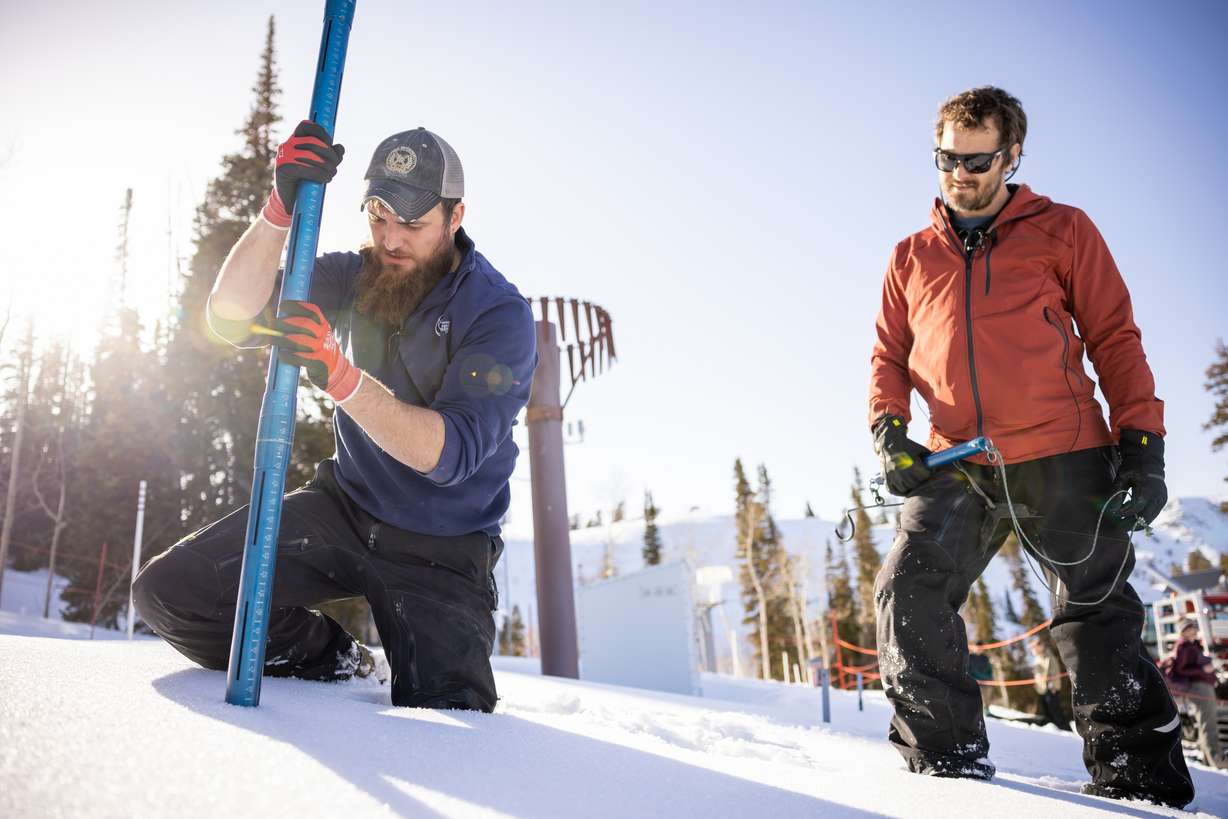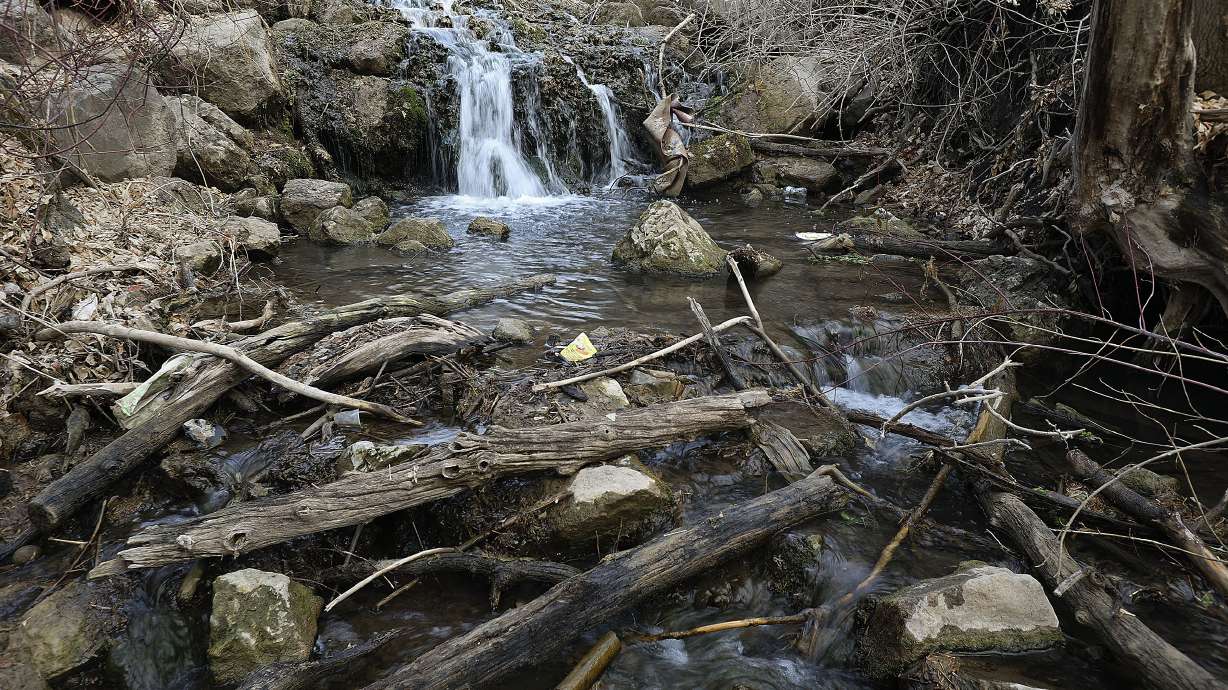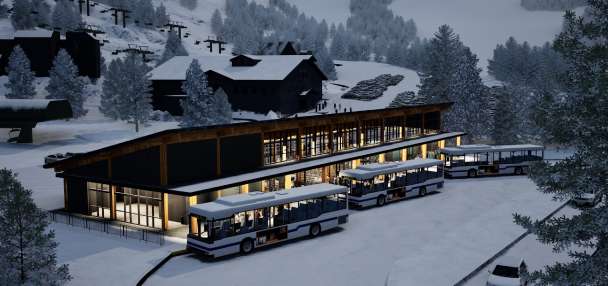Estimated read time: 7-8 minutes
This archived news story is available only for your personal, non-commercial use. Information in the story may be outdated or superseded by additional information. Reading or replaying the story in its archived form does not constitute a republication of the story.
SOUTH SALT LAKE — Sifting through the data at snowpack sites in the area, Robert Thompson stopped at a site at Snowbird Resort in Little Cottonwood Canyon.
Unlike some of the snow collection sites in the state, it's a north-facing slope and in a higher elevation location, meaning the snow there doesn't melt as fast as other sites in direct sunlight. But the data there is about as alarming as the rest of the state.
At 28.3 inches of water currently contained in snow, the site is well above the state average but over a half-foot of water below where it should be in the final few days of March, according to the 30-year average of the site. It's listed at 81% of normal for this time of the year, also above the statewide average.
The site typically doesn't peak until late April and doesn't start dropping until May; however, it lost nearly a full inch of water over the weekend, only regaining some from storms this week.
"We're well below the (average), we're below where we were last year, so this is a pretty good indicator that our snowpack is not in great shape right now," said Thompson, the Salt Lake County watershed manager, presenting the information to the county council Tuesday afternoon.
"Without a wetter and colder spring, we probably shouldn't expect (our current snowpack) to do much in the way of rising," he continued. "The forecast is telling us that it's not going to happen."
Thompson presented the information as the first part in a four-part series dubbed the "2022 Water Summit" aimed at providing data and information to the Salt Lake Council that will help it as it crafts water consumption policy this year.
While storms have eased Utah's drought situation some, what appears to be a below-average snowpack this year mixed with expected warm and dry conditions could toss Utah back into the worst drought categories in the country. That means state and local governments, such as the Salt Lake County Council, may have to initiate water conservation goals again this spring and summer to avoid serious issues.
Salt Lake County Mayor Jenny Wilson said county agencies were able to reduce consumption by 13% last year and it's shaping up that the county will have to cut back again based on the current snowpack and forecast data.
"It's clear we have to do more," she said. "We far exceeded our goal, and we know as we go into another dry year that our work in the future is all the more important."
Where we're at in the water year
The 2022 water year has been quite a rollercoaster. October and December produced tons of rain and snow, ranking near the top all-time in Utah history in terms of precipitation. But November, January and Feburary were rough, all ranking in the bottom 10 in state history. March has been productive, but not enough to cover the gap caused after everything dried out about a week after New Year's Day, much to the dismay of experts like Thompson.
"It's one of the wetter months that we can usually expect some pretty reliable precipitation. We really expected this March to bolster the snowpack and, instead, we have not done much (to do that)," he said.

The statewide snowpack hovered over 80% of normal throughout most of March but hasn't gotten to the 100% that Gov. Spencer Cox had hoped to avoid a "dire" situation for water supply this year. It was close to about 88% of the 30-year average when the record high temperatures reported across the state caused it to start to melt earlier than it traditionally does.
If you compound the significantly below-average precipitation regionally with above-average temperatures, that doesn't bode well for the regional forecast for water availability.
–Robert Thompson, Salt Lake County watershed manager
Over the past 30 years, Utah's snowpack has typically begun to melt on April 4; barring large and unexpected April snowstorms, this year's peak appears to be March 23, when there was an average of 11.9 inches of water in the snow statewide.
It has since fallen to 10.4 inches, dropping over 1.5 inches in less than a week, according to Natural Resources Conservation Service data on Tuesday. The snowpack is currently about 74% of average for this time in the year.
For comparison, last year's snowpack, which was considered really bad in Utah, peaked on March 28, 2021, at 12.1 inches of water.
The snowpack areas around Salt Lake County are dealing with the same type of problem. The average snow site within the Provo River-Utah Lake-Jordan River basin, such as the sensor at Snowbird, slipped from 14.1 inches of water on Friday, about 82.5% of normal, to 12.4 inches Tuesday, which is 71% of normal.

The long-range outlook for April, May and June isn't favorable, projecting warmer and drier than average conditions.
"If you compound the significantly below-average precipitation regionally with above-average temperatures, that doesn't bode well for the regional forecast for water availability," Thompson said. "This is where some of the alarm is coming from."
The soil moisture conundrum
Last weekend's melt resulted in skyrocketing soil saturation, which Thompson points out sounds like a good thing. Experts say the extremely dry soil levels ahead of last year's snowpack collection and runoff led to more water going toward replenishing groundwater than going into streams, rivers and reservoirs.
But that's the problem with last weekend's early snowmelt, which causes a double-whammy of water issues.
First, the water isn't flowing to the reservoirs, which helps the water supply needed for homes, businesses and farmers. Second, it opens the door for surface runoff, which can lead to flooding issues.
"Even in a really poor water year like this, we could be looking at possibly flooding scenarios if you have the wrong melt cycle happen," Thompson explained. "So it's not the best-case scenario any way you slice it."
Making water conservation the 'new normal'
Thompson admits that the data offers "kind of a bleak scenario" when it comes to the county water supply this year. It's why county leaders are gearing up to find ways to reduce water consumption throughout the spring and summer while hoping that the next water year will be more favorable.
Amid last year's drought, which prompted the governor to issue a state of emergency, Wilson targeted a goal of reducing water consumption by at least 5%. It ended up at 13%, or 33 million gallons of water, which was "no small feat," said Lisa Hartman, Salt Lake County's associate deputy mayor.
The same challenge was issued to residents, who came through in flying colors. Statewide, residents saved "billions and billions of gallons" last year, according to Cox. Ultimately, the county found success in sharing little things residents could do, such as taking slightly shorter showers or cutting back on lawn watering once a week, which helped out.
"It's actually starting small, and the cumulative effect of all of us working together to reduce that water footprint," Hartman said.
County agencies will have another challenge this year. All county agencies have been told to hold off any watering until at least May 15, and water one less day every week from normal watering practices throughout the rest of the year. Hartman said most, if not all watering in April and May is only wasteful anyway.
The county is also asking its agencies to monitor sprinklers and adjust them to make sure they are watering correctly, and make sure sidewalks and parking aren't messing with water flow. And that may just be the beginning.
"We don't know what the next months will look like ... just what the summer holds for us," Hartman said. "We always felt like 5% is a goal that was going to be hard for some of our agencies but one that we thought would be positive."
Either way, county parks and lawns overseen by county agencies may end up as yellow as they were at the end of last summer.
Residents will be asked to reduce their own water consumption by 5%, as well. If one-fourth of all residents cut back 5%, it's estimated that the county can save about 2 million gallons of water every day, according to the county.
The county expects state and federal initiatives to also be introduced given the dry conditions across the state and the West. Ultimately, county officials say goals will likely have to be expanded in the future if there isn't any turnaround in the weather.
"I think the conversation has changed," Hardman said. "We're more conscious about preserving water for future generations — drought or not. I think all the things we've asked our agencies to do are good practices moving forward and why we feel comfortable with continuing that on."










